Shockwave Therapy
If you have a longstanding injury, that tends to go in cycles of getting better then worse is characterised by being stiff when you start moving or exercising but better the more you move then it is likely Shockwave Therapy could be the right treatment option for you.
What Is Shockwave Therapy?
Shockwave therapy is a non-invasive treatment that involves creating a series of low energy acoustic wave pulsations that are directly applied to an injury through a person’s skin via a gel medium. The concept and technology originally evolved from the discovery that focused sound waves were capable of breaking down kidney and gallstones. Generated shockwaves have proven successful in a number of scientific studies for the treatment of chronic conditions. Shockwave therapy is its own treatment for a lingering injury, or pain resulting from illness. You don’t need painkillers with it – the purpose of the therapy is to trigger the body’s own natural healing response. Many people report that their pain is reduced and mobility improved after the first treatment.
How does shockwave therapy work?
Shockwave therapy is a modality that is becoming more common in physiotherapy. Using a much lower energy than in medical applications, shockwave therapy, or extracorporeal shock wave therapy (ESWT), is used in the treatment of many musculoskeletal conditions, primarily those involving connective tissues such as ligaments and tendons.
Shockwave therapy offers physiotherapists another tool for stubborn, chronic tendinopathy. There are some tendon conditions that just don’t seem to respond to traditional forms of treatment, and having the option of shockwave therapy treatment allows physiotherapist another tool in their arsenal. Shockwave therapy is most suited for people who have chronic (ie greater than six weeks) tendinopathies (commonly referred to as tendinitis) which haven’t responded to other treatment; these include: tennis elbow, achilles, rotator cuff, plantar fasciitis, jumpers knee, calcific tendinitis of the shoulder. These could be as a result of sport, overuse, or repetitive strain.
You will be assessed by the physiotherapist at your first visit to confirm that you are an appropriate candidate for shockwave therapy. The physio will ensure you are educated about your condition and what you can do in conjunction with treatment – activity modification, specific exercises, assessing any other contributing issues such as posture, tightness/weakness of other muscle groups etc. Shockwave treatment is usually done once a week for 3-6 weeks, depending on results. The treatment itself can cause mild discomfort, but it only last 4-5 minutes, and the intensity can be adjusted to keep it comfortable.
Frequently asked questions
Why should I see a physiotherapist for shockwave therapy?
A few different health professions (including consultants) carry out Shockwave therapy, however the research has shown that Shockwave therapy is most effective when followed by a structured strengthening program. We provide both during your course of Shockwave therapy to ensure full resolution of symptoms.
Does it hurt?!
A little, but no more than us digging into your glute with an elbow!
I haven’t seen my GP or a consultant can I still come for a shockwave appointment?
ABSOLUTELY! In many cases it is better to come straight to us then we can get you on the path to full fitness quicker.
I have had a Corticosteroid injection that gave me some relief but now my condition has come back will Shockwave help??
Corticosteroids can be really useful but generally providing short term pain relief. Shockwave eliminates the issue and source and strengthening ensures it doesn’t return. If you have recently had a Corticosteroid injection you must wait 6 weeks before receiving shockwave therapy.
I have private medical insurance does it cover Shockwave Therapy?
YES it does but you will have to contact them to specifically request shockwave therapy. We are registered with all major private healthcare insurers just let us know when you book. Private medical insurers cover shockwave therapy for certain conditions either contact us on your insurer and we can advise you from there.
I have never been to a physio before, what should I wear?
You should wear clothes you are comfortable exercising in as we may want to utilise the rehabilitation gym. In the treatment room you should wear clothing that means we can accurately assess the area of the body we are treating, for example wearing shorts for a lower limb injury or a top with straps for a shoulder injury.
I have a very busy schedule how long will my session be?
Shockwave therapy sessions are 45 minutes (apart from private insurance which only covers for 30 minutes). Shockwave therapy itself takes around 10 minutes but this is paired with exercise, taping, soft tissue work or any other treatment your therapist deems appropriate







